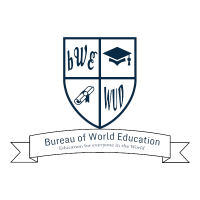
Having a purpose comes with advantages, in keeping with Heather Malin, a advisor and former director of analysis on the Stanford Center on Adolescence. When college students determine a higher function in what they be taught in school, their educational efficiency, persistence and social belonging rise, Malin mentioned throughout a chat on the current Learning and The Brain: Teaching Engaged Brains convention. Essentially the most purposeful individuals have many intentions, she mentioned. “They appear to get boundless power from having numerous meaningful intentions for his or her lives.”
So how can faculties faucet into the power of purpose? Malin pointed to her function studying framework, a four-part set of suggestions for educators, distilled from her work at Stanford, in addition to the work of the Open Future Institute’s QUESTion Project and different analysis rooted in function studying. In response to Malin, function studying helps college students discover and join with their deeper whys. This strategy offers “house in school for college kids to find who they’re, what they need in life, and the way they wish to be on the planet,” she mentioned. In a few of her analysis that isn’t but printed, alumni of function studying applications have reported improved relationships with academics and friends.
Malin recognized three dimensions of function that academics might help college students discover:
- Generalized and significant intention – This entails the scholar’s understanding of who they wish to be on the planet and informs how they set objectives.
- Past-the-self motivation – Partaking college students in points outdoors their very own lived experiences and serving to them discover methods to contribute empowers them with the talents and mindset to reside a purposeful life.
- Objective-directed motion – As a result of future planning is challenging for teens, they want assist in studying to set and work towards objectives.
Teen brains are neurologically wired to seek excitement and new stimuli. “If we are able to align faculty studying exercise to that exploratory course of, we now have a strong approach to inspire teenagers,” Malin mentioned. Specializing in function can do this. “It engages that novelty searching for, threat taking, identity forming and social engagement which are so rewarding for adolescent brains.”
Step 1: Self-exploration
Step one within the function studying framework is inviting college students to self-discovery with questions reminiscent of:
- Are there any societal or cultural influences which have formed your values?
- How properly do you suppose your loved ones of origins values align along with your private values?
Self-exploration discussions permit college students to foster deeper connections with their peers and academics that may permit for deeper studying. “[The students] didn’t notice they’d so many shared experiences, challenges, hopes and worries,” she mentioned relating to student feedback she and her group acquired throughout analysis.
Step 2: Look outward
Prompting college students to look outward, the second step of the framework, might help them to outline their very own sense of function. “Self-awareness is vital, but it surely’s meaningless if we don’t know join our inside self to the world past ourselves,” mentioned Malin. This course of usually consists of workouts in social consciousness and social duty, reminiscent of interviewing a member of the group.
Step 3: Future planning
The third step of the aim studying framework is partaking college students in ahead pondering and future planning. “The mechanics of trying ahead, trying to the long run with a objective setting and planning strategy might be rather more difficult for adolescents,” so it’s vital that academics scaffold these ahead trying steps for college kids, mentioned Malin.
Step 4: Motion
With regards to taking motion, the fourth step of Malin’s framework, educators can encourage college students to do significant work outdoors the classroom and of their group. Adolescents usually really feel discouraged from real-world change making due to their youth, Malin mentioned. “Teenagers want real opportunities to do issues on the planet,” and “they want alternatives to mirror on how their actions influence others,” she mentioned. In response to Malin, motion and well-being are related to extra engaged college students, however, “our college system is essentially set as much as inhibit this sort of actual world studying.”
















